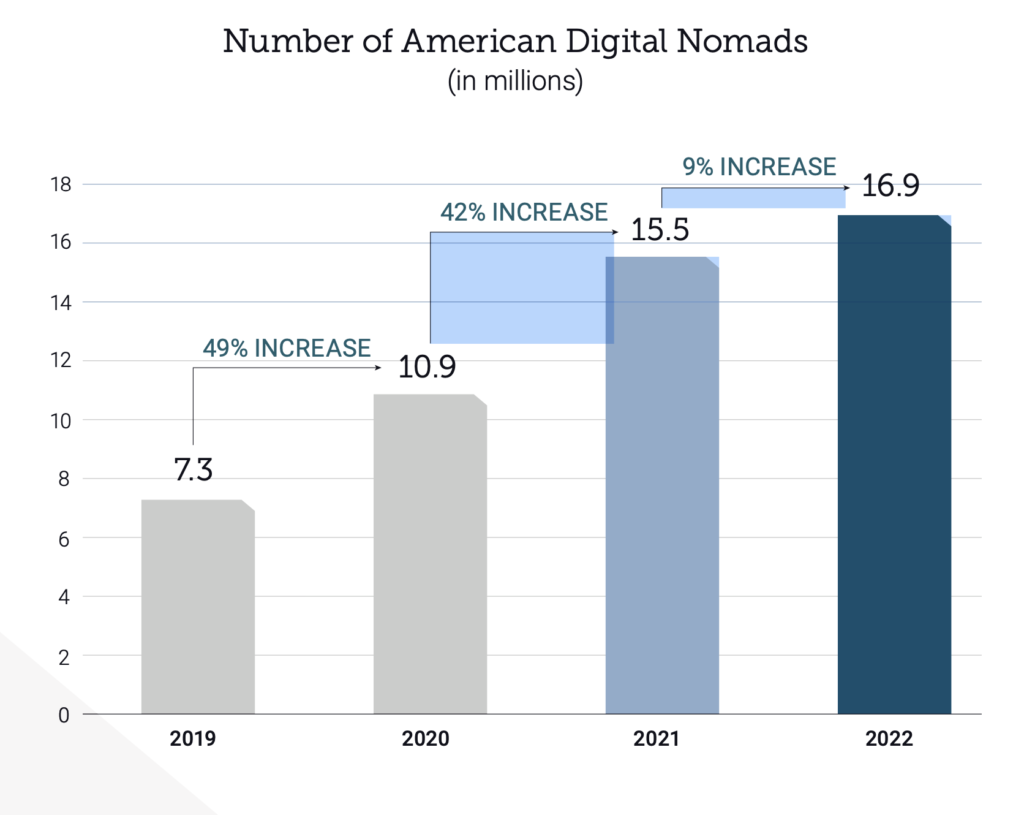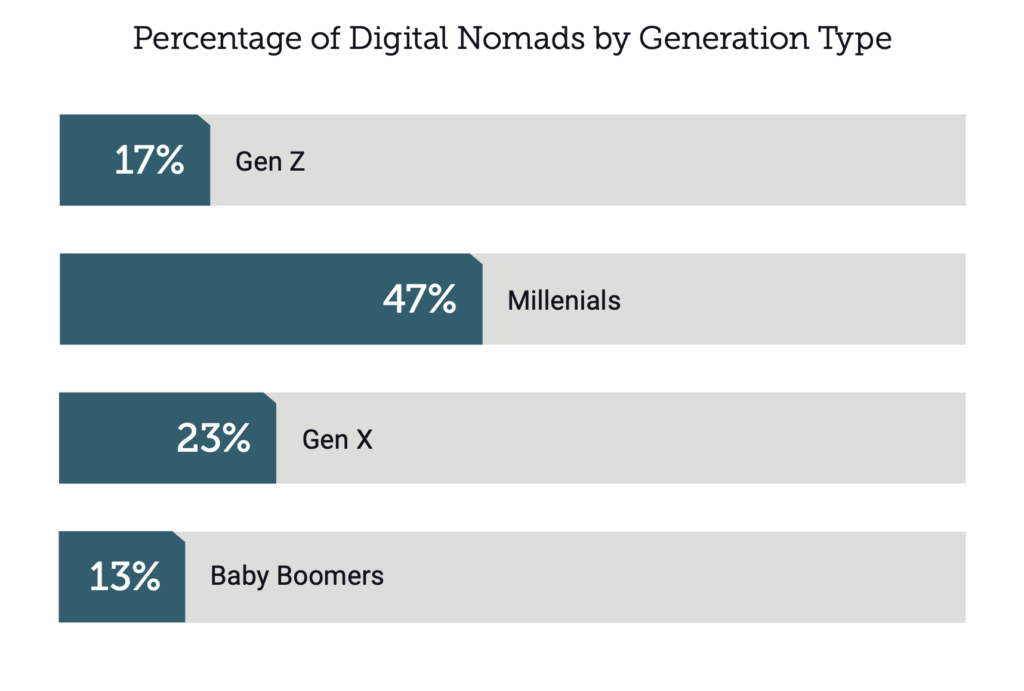Digital nomads, a growing category that will continue to grow
Digital nomads continue to increase, especially in the United States. This is revealed by a number of studies but also by the evolution of facts, particularly with the Covid-19 pandemic that has spread remote working worldwide. Americans experienced digital nomadism many years before the health emergency that shocked the world in 2020. Still, even after the phenomenon subsided, the growth of those who work, choosing independently the times and places where they do so, has continued. Certifying the trend is the 2022 MBO Partners State of Independence survey, conducted for the 12th year in a row, interviewing 6,488 US residents over the age of 18, including 901 current digital nomads.
Digital nomads with traditional jobs lead the category
The most striking figure concerns the number of American digital nomads: 16.9 million. With an increase of 9% compared to 2021, when compared to the previous twelve months, the increase was 131%. Digital nomads with traditional jobs have also become more numerous, rising in 2022 from 10.2 to 11.1 million (+9%). This is in addition to the 42% increase in 2021 and the 100% surge in 2020.
For me, this is a significant change, as it highlights two trends that can transform the approach to work. On the one hand, workers who have a job in a company have the security of a certain annual income (usually quite above average), which leads them to want to leave the office, preferring to work from different locations. On the other hand, after compulsorily experimenting with smart working (in its different forms because working from home is a different thing from smart working), companies are now willing at least partly to release work from the office to please their workers. They must also do so unwillingly because otherwise, they risk losing top talent attracted elsewhere by better offers and conditions.


If, in the collective imagination, the digital nomad is a creative who earns money working on several fronts with different clients, the MBO survey helps to understand why the digital nomad who instead does traditional work is on the rise. In 2022, US freelancers and self-employed workers increased by 5% year-on-year. In contrast, while in 2019, company-bound US digital nomads were 44%, three years later, they have increased by a third to 66% of the total.
Relative to age, the digital nomad’s lifestyle is most prevalent among Millennials and Gen Z, who have been steadily increasing since 2019 and whose sum is almost two-thirds of the entire category. This stems from the greater flexibility, ability to adapt to different scenarios encountered on the move and curiosity typical of younger people. Generation X has remained stable at around 23%, while Baby Boomers (13%), frightened in the last three years by the Covid-19 pitfalls, are declining. However, thanks to their high income and the opportunity to travel according to their preferences, they remain a stable category with unique and advantageous conditions compared to all.


The need to rethink the office will not stop the growth of digital nomads
To these numbers, we must add that the evolution of work is moving towards the spread of smart working and hybrid formulas that combine on-site and remote work. This is why I believe that in the near future, the number of digital nomads will continue to grow, who will carry out their work in different ways but less and less on their office desks. The willingness to travel remains a priority for many people, and having experienced that one can work effectively and with more benefits away from one’s location is a hard lesson to erase in workers’ minds. Although reluctant to the transformation, companies must therefore bow their heads and review the working model used up until recent years.

The office needs to be rethought and redesigned with the coexistence of different zones, with, for example, open space combined with smaller, more private rooms, because workers have different needs to satisfy. Including extra-work activities and areas that encourage moments of lightening up to let the mind breathe would be another step forward and healthy for people’s productivity. This is true for those willing to consider returning to the office. Even with advancing years and the search for stability, the digital nomad will likely continue to move around to satiate his desire for discovery.



